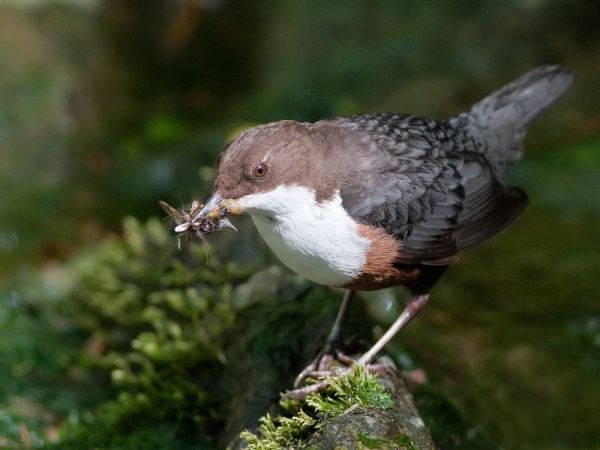Facts About White-throated dipper
The white-throated dipper, often referred to as the European dipper or simply dipper, is an extraordinary bird that thrives near water. These birds are dispersed across Europe, the Middle East, Central Asia, and the Indian Subcontinent. Remarkably, Norway has designated it as their national bird. The dipper was first described by Carl Linnaeus in 1758 and belongs to the genus Cinclus. Out of the 14 recognized subspecies, one has unfortunately become extinct.
These birds measure around 18 centimeters in length, characterized by a brown head, slate-grey back, and, as their name suggests, a white throat and upper breast. They flourish near fast-moving rivers and streams and are often observed bobbing on rocks or diving underwater in search of food. Their diet consists of aquatic invertebrates, fish, small amphibians, and crustaceans. When nesting, dippers build their nests close to or above water, typically laying between 1 to 8 eggs, with 4-5 being the most common. The eggs require about 16 days to hatch, and both parents participate in feeding the young.
The white-throated dipper has captivated human interest for centuries. The earliest detailed description dates back to the twelfth century by Gerald of Wales, who inaccurately classified it as a peculiar variety of kingfisher. These birds have a notable lifespan, living up to 10 years and 7 months, which is quite impressive for their size.

 Ireland
Ireland